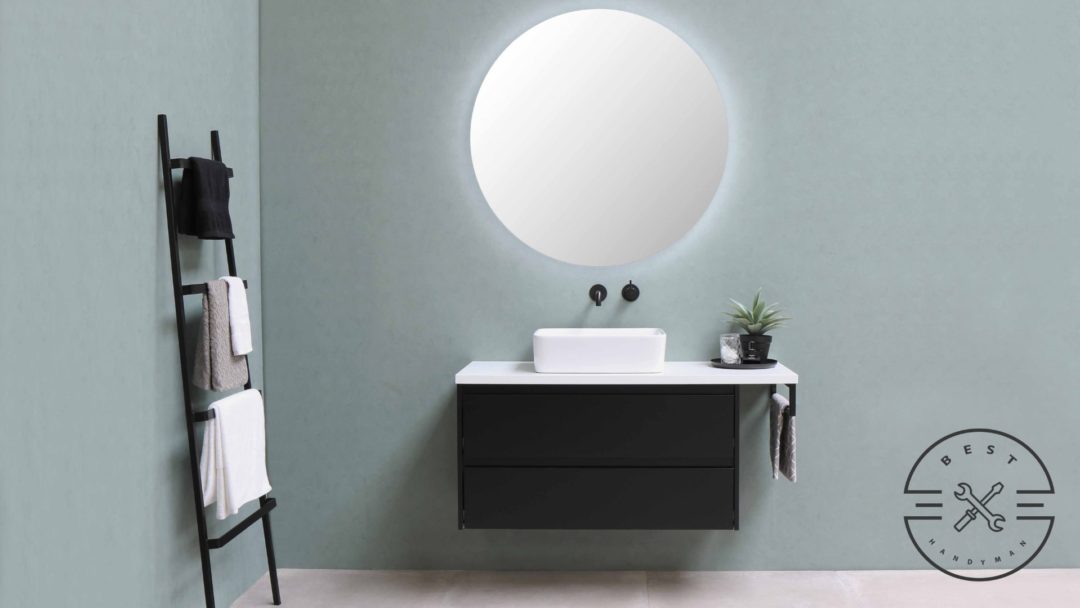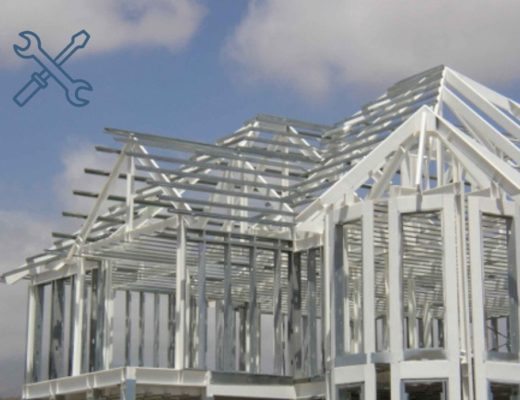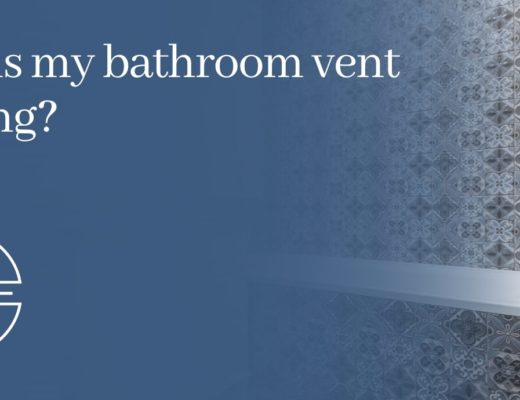The bathroom vanity can make or break the overall aesthetic of your bathroom. Adding one can improve the bathroom’s functionality, and just replacing an old one can result in a more refreshed aesthetic.
However, like with any home improvement project, installing a new vanity comes with a price tag. It can generally cost $300 to $3,800 to install a vanity, depending on the type and size, the countertop material, and the fixtures added.
To get a better estimate for the bathroom vanity you want to install, here’s a comprehensive breakdown of all the factors that can influence the cost of installation and the additional costs you may incur.
Factors That Can Influence the Cost of Installing a Bathroom Vanity
Type of Bathroom Vanity
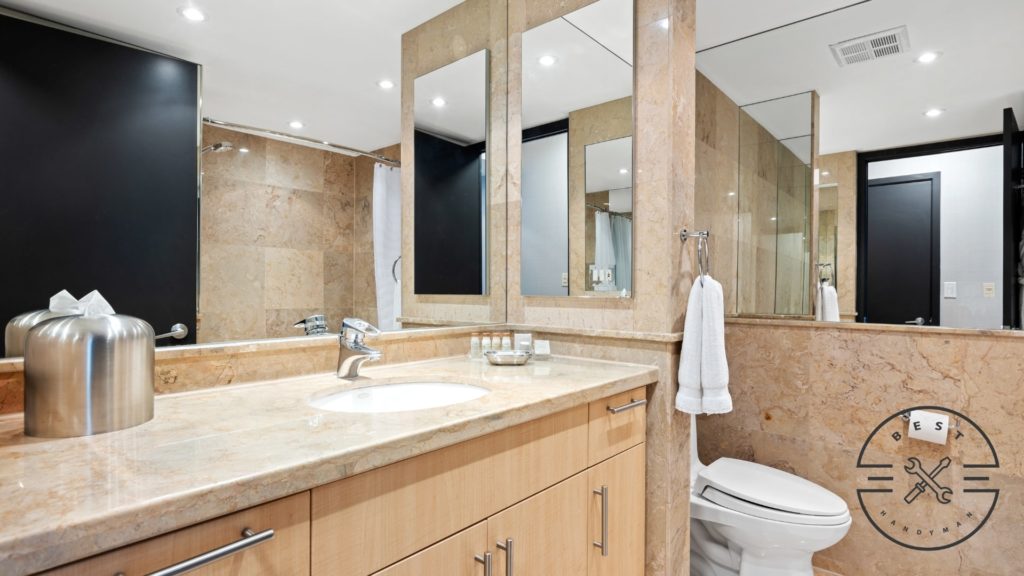
There are two main types of bathroom vanity: premade and custom-built. The cost can vary greatly depending on the type you choose.
Premade Bathroom Vanity
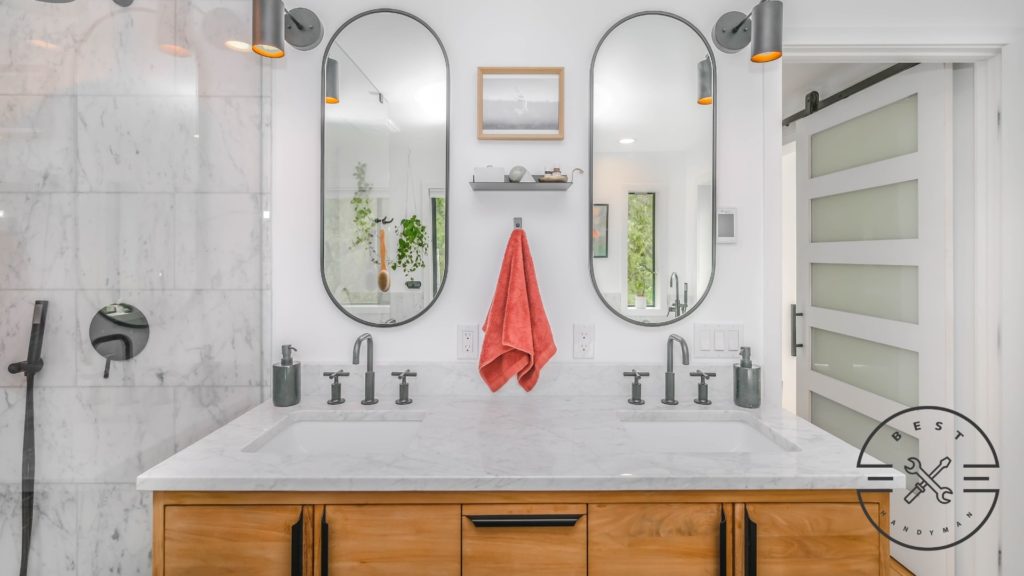
Premade vanities are generally more affordable than custom-built ones because they are mass-produced and come in standardized sizes and designs. Depending on the size, materials, and features, they can cost anywhere from $100 to $2,600.
Although standardized, premade varieties can come in various styles, finishes, and materials to suit different bathroom aesthetics. They typically come with a cabinet, a countertop, and a matching mirror.
While premade vanities are cost-effective, they offer limited opportunities for modifications and customizations. They may not be suitable for those with unique bathroom layouts or specific design requirements.
Custom-Built Bathroom Vanity
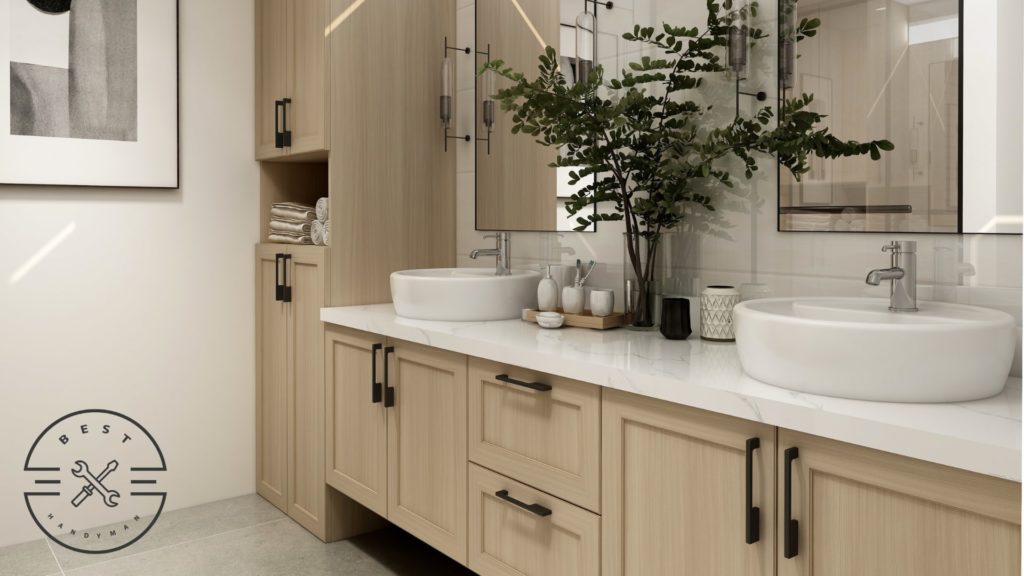
Custom-built bathroom vanities offer flexibility when it comes to customizations, so homeowners can have cabinets that perfectly fit their preferences, style, and bathroom dimensions. However, this flexibility also comes with a hefty price.
Custom vanities are often more expensive than premade options, costing around $500 to $3,000 depending on the design, features, materials, and size. The price range is for the unit alone, and installation will cost an additional $500 to $1,000.
However, since they’re custom-built, you have the liberty to choose the materials that best fit you. They also generally last longer than premade ones since they’re often made of high-quality materials.
Size
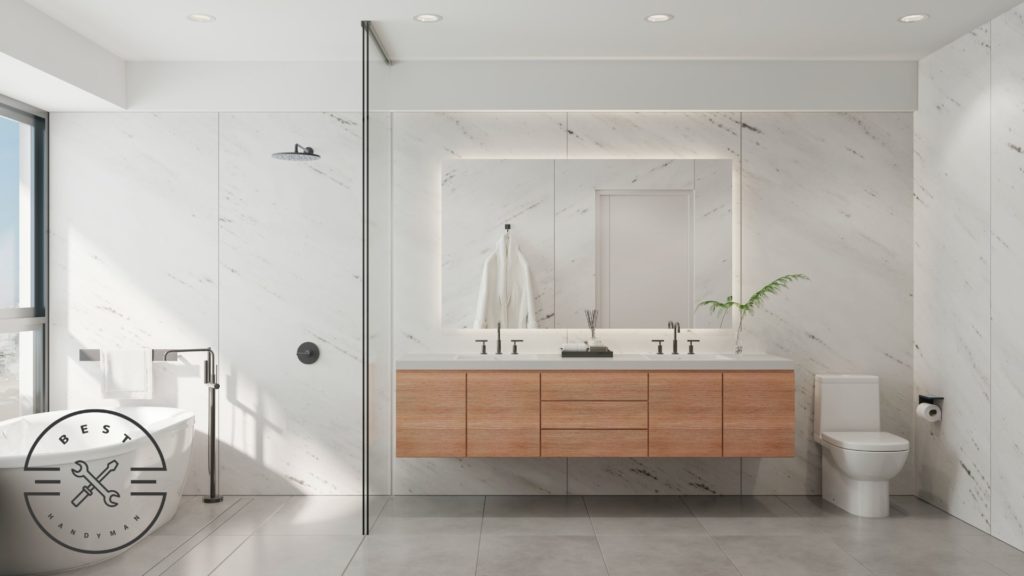
The size of the bathroom vanity is one of the biggest that influences the total cost. Not only do larger vanities require more materials to make, but installing them can also be more complex and time-consuming, driving up labor costs.
Larger vanities, especially those with double sinks, require more adjustments to plumbing systems. Plumbers may need to install additional connections just to accommodate the needs of larger vanities.
A premade 6-foot single-sink vanity will typically cost around $800 to $2,100, while a double-sink one will cost $1,000 to $2,200, excluding labor. Anything larger than that is typically custom-built, though there are still some premade ones.
Countertop Material
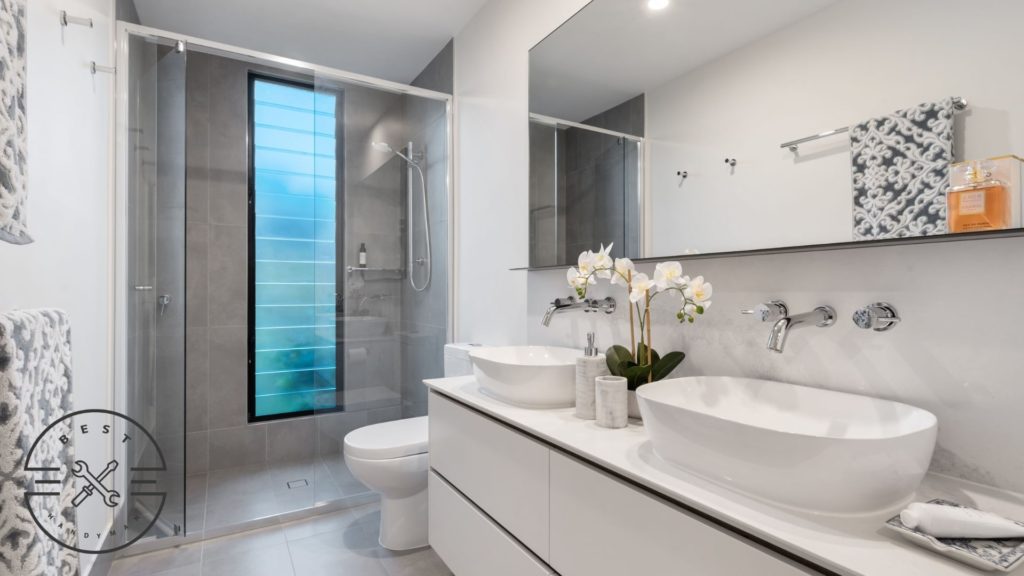
The countertop typically makes up most of the total cost of the vanity, so whatever material is used to make it can greatly affect the cost of the vanity. Some materials may be more expensive than others, and some may be more challenging to install.
Porcelain or Ceramic Tile
Porcelain and ceramic tile countertops are popular choices for bathroom vanities due to their durability, low price point, and design versatility. They come in a wide variety of colors, patterns, and finishes, giving homeowners more choices for their vanity.
The tiles only cost $0.50 to $10 per square foot, but you’ll need another $6 to $10 per square foot for the materials needed to install them, like adhesive and sealant. Hence, you can expect to pay $6.50 to $20 per square foot for a tiled countertop.
Granite
Granite is a natural stone loved for its durability and natural aesthetic. It can be finished in various ways, including polished, honed, and leathered, to suit various bathroom styles.
However, it’s naturally porous and can get damaged over time due to the high moisture level in bathrooms. It’s common to apply a sealer on a granite countertop to protect it from moisture, especially if it’s meant to be used for a bathroom vanity.
Granite vanity countertops can cost anywhere from $5 to $60 per square foot, depending on the type and finish. Granite tiles typically sell for $5 to $15 per square foot, while granite slabs sell for $40 to $60 per square foot.
Laminate
Laminate countertops are another budget-friendly option for cost-conscious homeowners who want beautiful bathroom vanities. They typically cost around $10 to $53 per square foot.
They’re made of layers of paper that are saturated in resin and bonded to a particleboard or medium-density fiberboard core. The top layer is a decorative surface that can imitate the look of various materials, such as wood and stone.
They’re relatively moisture-resistant but will still need sealing as they can swell over time if exposed to standing water or high humidity levels.
Corian
Corian countertops for bathroom vanities usually cost $20 to $75 per square foot, depending on the style, thickness, and finish. They’re made from a combination of polymers and various materials, like alumina trihydrate, resins, and epoxide.
They were exclusively made by DuPont at first, but other companies also made their own version when DuPont lost the patent for them. Corian is actually the brand name for Dupont’s product, but it’s now used to refer to all similar products.
Aside from their low price point, they’re best known for their repairability. Scratches, dings, and minor damages can be sanded out or repaired by the supplier, so they can typically last for a long time.
Cultured Marble
Cultured marble is a man-made material considered to be a more cost-effective alternative to real marble. Countertops made of them typically only cost around $30 to $100 per square foot, depending on the thickness and style.
Cultured marble is made by blending crushed natural marble stone with synthetic resins. It’s a common material used for countertops of premade bathroom vanities.
Unlike real marble, cultured marble countertops don’t need sealing as they’re non-porous and won’t be affected by the high humidity level in bathrooms.
Concrete
Concrete countertops’ biggest advantage is the high level of customization they offer. They can be molded into virtually any shape or size, allowing homeowners to have countertops with unique and quirky designs, edge profiles, and surface finishes.
However, concrete is very heavy, so the vanity’s cabinet or bottom structure should be strong enough to support the weight of the countertop. This is why concrete countertops are mostly seen in custom-built vanities compared to premade vanities.
Prepare around $65 to $135 per square foot if you want a concrete countertop for your bathroom vanity.
Quartz
Quartz countertops are engineered surfaces made by combining ground quartz crystals with resins. They are durable, non-porous, and scratch-resistant, making them one of the most popular choices for homeowners.
Since it’s non-porous, it’s often a much better choice for bathrooms than other natural stones, like granite. However, they can be pretty expensive, costing around $50 to $200 per square foot.
Composite
Composite countertops are made from a mix of pulverized natural stone, such as granite and resins. They are highly resistant to moisture and stains, making them one of the most suitable choices for bathroom vanities.
They cost around $75 to $120 per square foot, which is a bit costlier than other materials. However, their durability and flexibility for customization make the price worth it.
Additionally, they’re often made of recycled materials, so they’re a more eco-friendly and sustainable choice.
Labor
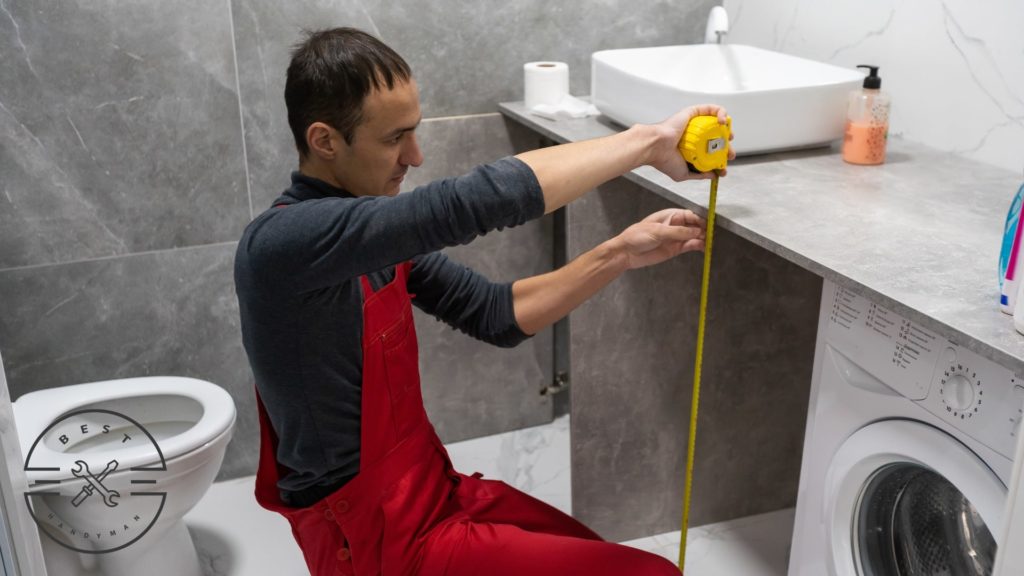
Labor costs for installing bathroom vanities can typically range from $100 to $1,000, depending on the size and type of the vanity.
Small and premade vanities are typically easy to install, so you can expect to pay on the lower end of the range for those. However, large and custom-built ones will take more time and effort to install, so the labor will generally fall on the higher end of the range.
Labor costs can also vary based on your address. Contractors from major cities, like Los Angeles and San Francisco, may charge more since their cost of living tends to be high.
Additional Costs That May Be Incurred When Installing Bathroom Vanity
Old Vanity Removal
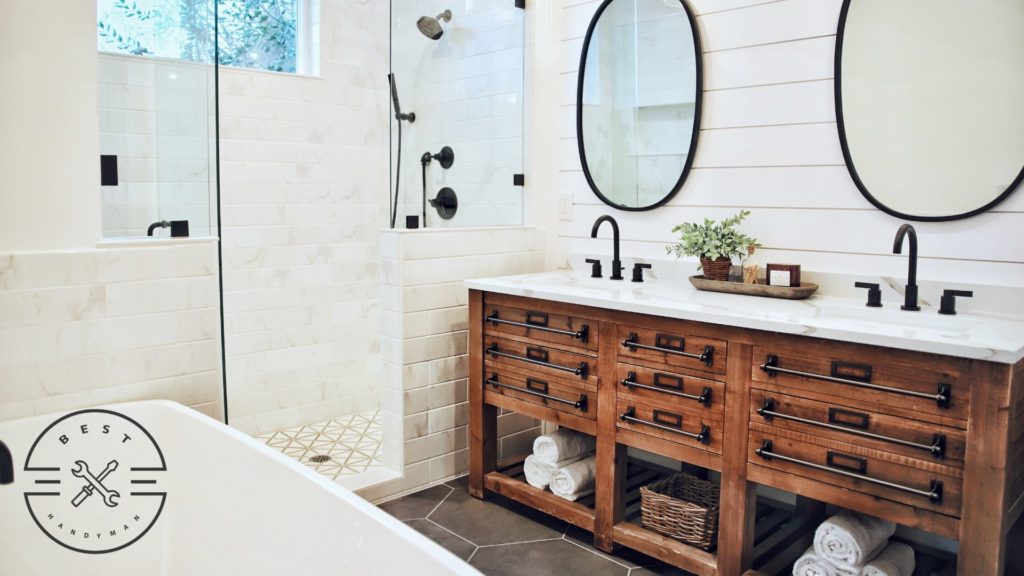
To be able to install a new bathroom vanity, you’ll have to remove and dispose of the current one. This process can cost around $115 to $500, depending on the materials used to build the vanity.
Vanities with natural stone or concrete countertops are typically the most expensive to remove since stone slabs and concrete are heavy. They’re also harder to dismantle, making the process more complicated.
Backsplash Installation
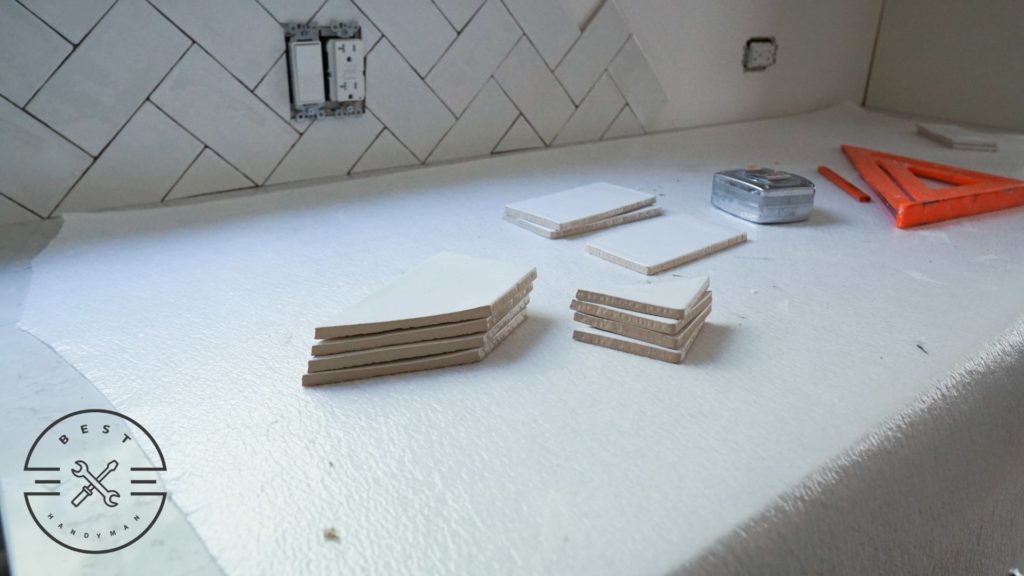
A backsplash is usually required whenever you install a bathroom vanity. It’s a protective element installed above and behind your vanity to protect the wall from stains and water splashes.
You can expect to pay around $2 to $30 per square foot, depending on the type of tiles you’ll use. Glasses and decorative ones are more expensive, so they may or may not exceed this price range.
Although backsplashes are usually made of tiles, they can also be made of stainless steel, laminate, or natural stone. These materials, however, may cause you to exceed the cost range we provided.
Faucets and Sink
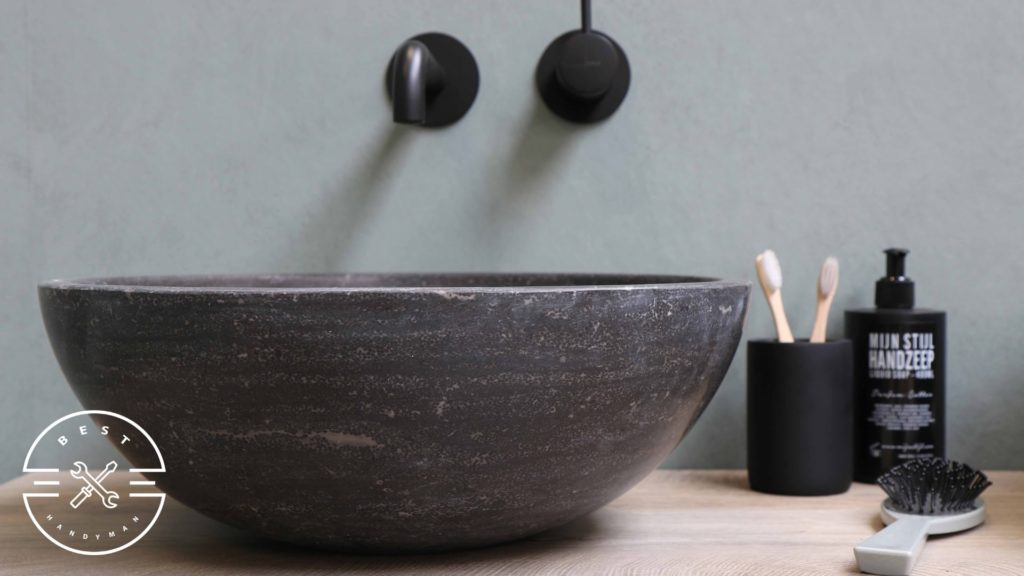
Some premade vanities don’t come with a sink to allow homeowners to choose one that will match their needs. Buying a sink can add $300 to $4,000 to the total cost of the vanity.
You’ll also have to add faucets to make the vanity more functional, which can add $250 to $1,400 to your total cost, depending on how many you need, the style, and the material of the faucets.
These additional costs will usually only matter in premade vanities since they’re often included in the final quote for custom-built vanities.
Plumbing
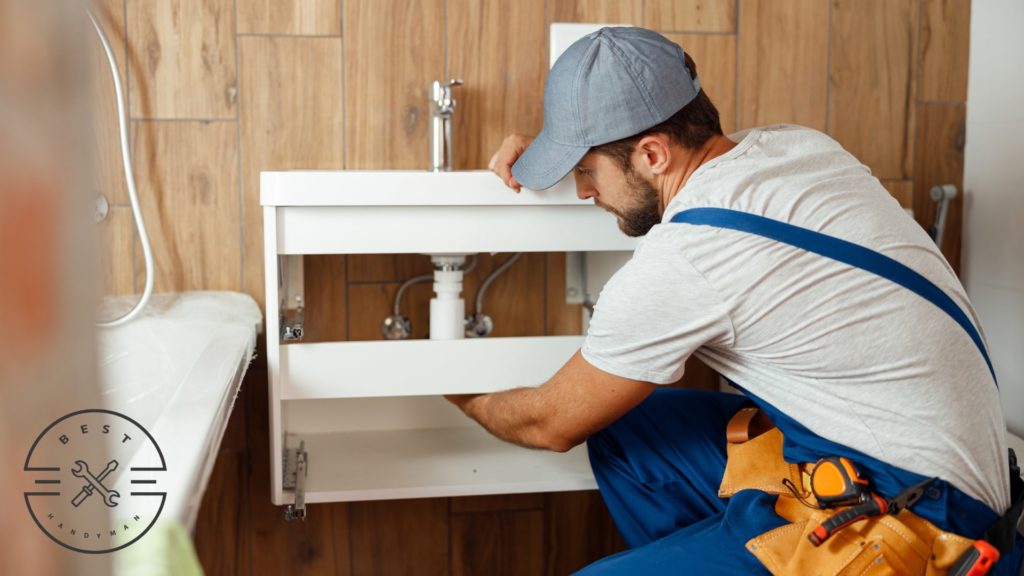
Installing a bathroom vanity will typically need the expertise of a licensed plumber since you’re likely to add new faucets and sinks. You may need to update your plumbing lines or install new ones to accommodate the needs of your new vanity.
Depending on the job’s complexity, plumbers typically charge $45 to $200 per hour. Overall, you can expect to pay anywhere between $400 and $2,000 to install new plumbing lines.
How do I save money when installing a bathroom vanity?
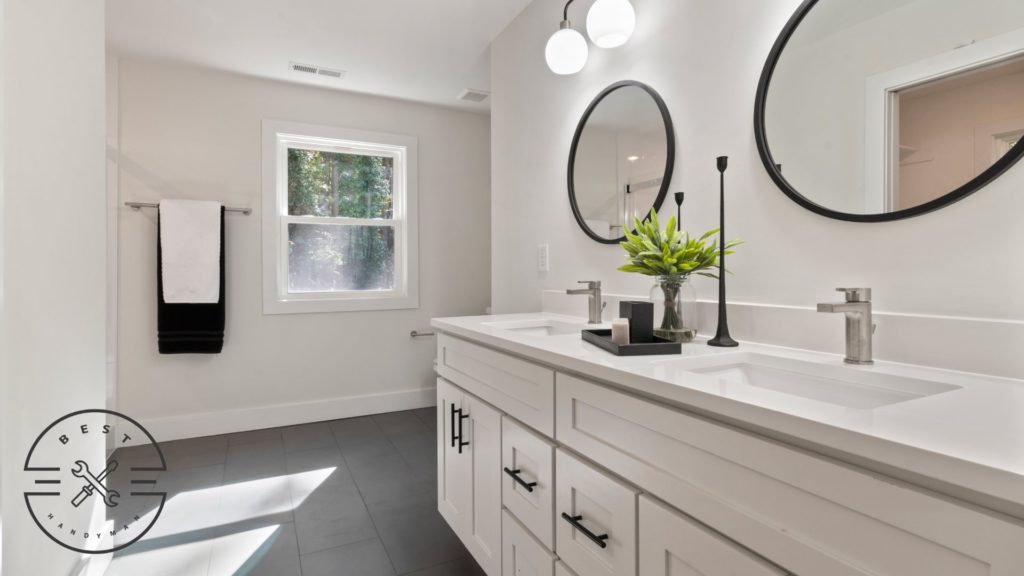
To save money when installing a bathroom vanity, follow these savvy tips:
- Go for a premade vanity.
Premade vanities are usually much more affordable than custom-built ones, so they’re a better option if you’re tight on budget. There are a lot of options that may work for your bathroom.
- Compare prices from different shops.
Reach out or visit different shops to compare the prices of their vanities, faucets, and sinks. Look for shops that have deals, discounts, and promotions so you can save as much money as possible.
- Explore secondhand options or refinish existing cabinets.
Some homeowners who are replacing their bathroom vanity may sell their old ones for a much lower price, so you may find a good one that will fit your budget.
You can also repurpose your old cabinets and turn them into vanity. This way, you’ll only need to buy a countertop.
- Reuse existing plumbing lines.
Choose vanities that match your existing plumbing layout to keep using them. Reusing or repairing existing plumbing lines will be much cheaper than installing new ones.
- Opt for a single-sink vanity.
Double-sink vanities tend to be more expensive since they use more materials. You’ll also need to buy more sinks and faucets for these vanities, so it’s best to opt for single-sink ones if you’re saving money.
Double-sink vanities will also need more complicated plumbing work, making them more expensive to install.
- Choose affordable fixtures or reuse existing ones.
There are a lot of faucets, handles, and lights that can still function properly even without the hefty price tag. You can also just use your existing ones if they’ll match with your new vanity to save up a few bucks.
- Consider more budget-friendly countertop materials.
The most expensive part of bathroom vanities is typically the countertops, so you can save a lot if you choose a more affordable countertop material. Laminate and tiles are generally cheap, so consider using them.
- Just replace the countertop instead of the whole vanity.
If the cabinets of your vanity are still fully functional, it can help you save a lot if you just change the countertop. Just repaint the cabinets to match the new countertop.
- Dismantle the old vanity yourself.
Removing the old vanity yourself can save you $115 to $500 on labor costs. Just be careful and make sure not to damage the wall and the plumbing works during dismantling to avoid more expenses.

